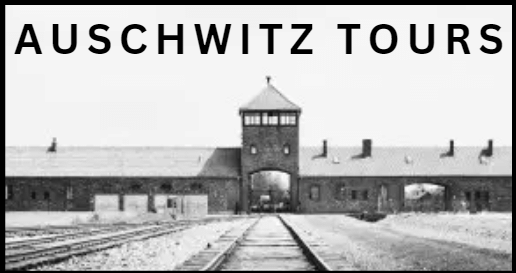Gas Chambers In Auschwitz
Krema 1 was the first gas chamber to be built at Auschwitz in 1940. Initially, it was used to kill Soviet prisoners of war, but later it was converted into an air raid shelter. In 1942, it was reconstructed as a gas chamber and operated until mid-1943. The chamber was located in the basement of a building in the Auschwitz main camp, adjacent to the crematorium. It had a capacity of 700 people per killing. The corpses were then transported to the crematorium to be burned. Krema 1 was one of the first sites of mass murder in Auschwitz, and its operation set a precedent for the other Auschwitz gas chambers in the complex.
Also Read: Auschwitz Concentration Camp
Krema II was one of the four main gas chambers in Auschwitz II-Birkenau, which was built in early 1943. The chamber had a capacity of around 2,000 people per killing. It used Zyklon B gas to murder prisoners, most of whom were Jews. The chamber was located adjacent to a crematorium, where the bodies were burned. Krema II was in operation until November 1944 when the Nazis destroyed the Auschwitz gas chambers in an effort to conceal their crimes. The destruction of Krema II was a significant event in the history of the Holocaust and symbolizes the horrors of the genocide committed by the Nazis.
Must Read: Jews in Auschwitz
Krema III was one of the four main Auschwitz gas chambers II-Birkenau. It was built in 1943, adjacent to a crematorium, and had a capacity of around 2,000 people per killing. The gas chamber was disguised as a shower room to deceive the prisoners. Zyklon B gas was used to kill the inmates, who were mostly Jewish. The corpses were then burned in the nearby crematorium. Krema III was destroyed by the Nazis in 1944 in an effort to conceal their crimes. The operation of Krema III is a haunting reminder of the atrocities committed during the Holocaust.
Also Checkout: Auschwitz Tickets & Tours
Krema IV was one of the four main Auschwitz gas chambers II-Birkenau, built in 1943. The gas chamber had a capacity of around 1,500 people per killing and used Zyklon B gas to murder the prisoners, mostly Jews. The chamber was located next to a crematorium where the bodies were burned. Krema IV was destroyed in 1944 by the Nazis in an attempt to conceal their crimes. The operation of Krema IV is a tragic reminder of the atrocities committed during the Holocaust and the horrors of the Nazi regi.
Recommended Read: Guide to Oskar Schindler's Enamel Factory
Krema V was a gas chamber and crematorium facility located in the Auschwitz-Birkenau concentration camp complex. It was constructed in early 1943 and operated until October 1944, during which time it was responsible for the deaths of thousands of prisoners, mainly Jews. The facility consisted of two gas chambers and a crematorium, as well as living quarters for the staff. After the war, the site was dismantled and today only the ruins of the building remain. It serves as a memorial to the victims of the Holocaust and a reminder of the atrocities committed at Auschwitz.
Must Read: Things to Do in Auschwitz
FAQs
How many gas chambers were there in Auschwitz?
There were several gas chambers in Auschwitz, with the most well-known ones being located in Auschwitz II-Birkenau. The exact number of gas chambers is not clear, but it is believed that there were at least four main gas chambers in Birkenau.
Recommended Read: Atrocities in Auschwitz
Who was killed in the gas chambers at Auschwitz?
The Auschwitz gas chambers were primarily used to kill Jewish prisoners, along with other marginalized groups such as Roma, Soviet prisoners of war, and people with disabilities.
When were the gas chambers at Auschwitz destroyed?
The gas chambers were destroyed by the Nazis in late 1944 in an attempt to conceal their crimes.
How many people were killed in the gas chambers at Auschwitz?
Approximately 1.1 million people were killed in Auschwitz, with the majority of them being killed in the gas chambers.
You May Also Like: Prisoners in Auschwitz
What is the best time to visit Auschwitz?
The best time to visit Auschwitz would depend on personal preferences and factors such as weather and crowds. The site is open year-round, with peak season being from June to August. During this time, the weather is generally mild and sunny, but it can also be quite crowded with visitors. Spring and fall are good times to visit if you prefer cooler temperatures and fewer crowds. Winter can be very cold, but it is also the least busy time of year to visit. It is important to keep in mind that visiting Auschwitz can be emotionally challenging, so it is recommended to allow enough time for reflection and processing after your visit.
Why is Auschwitz so famous?
Auschwitz is famous because it was the largest concentration and extermination camp built by the Nazis during World War II. It was the center of the Holocaust, a systematic genocide that resulted in the deaths of approximately six million Jews, along with millions of other marginalized groups such as Roma, Soviet prisoners of war, and people with disabilities. The horrors of Auschwitz and the atrocities committed there have become symbols of the Nazi regime's brutality and the suffering of the victims.
Book Now: Tickets Wawel Castle

